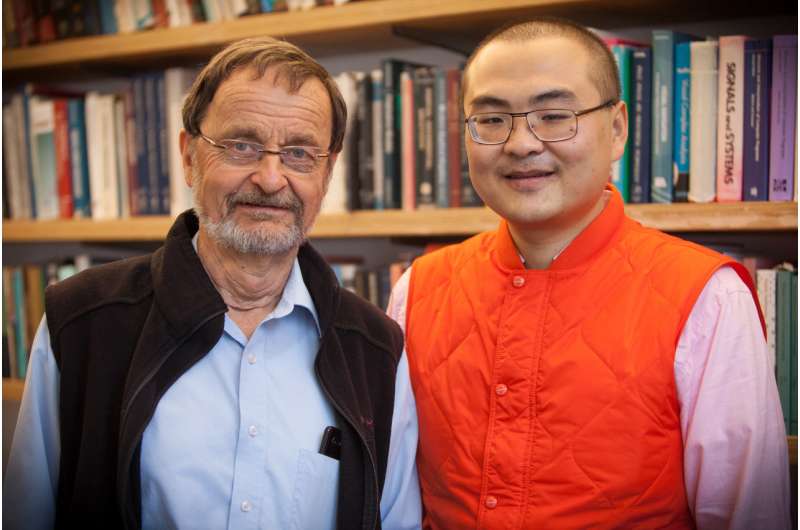Scientists prove tailgating doesn't get you there faster

We've all experienced "phantom traffic jams" that arise without any apparent cause. Researchers from MIT's Computer Science and Artificial Intelligence Laboratory (CSAIL) recently showed that we'd have fewer if we made one small change to how we drive: no more tailgating.
Specifically, the team's new journal article argues that if we all kept an equal distance between the cars in front of and behind us - an approach that MIT professor Berthold Horn describes as "bilateral control" - we would all get where we're going almost twice as quickly.
"We humans tend to view the world in terms of what's ahead of us, both literally and conceptually, so it might seem counter-intuitive to look backwards," says Horn, who co-authored the article with postdoctoral associate Liang Wang. "But driving like this could have a dramatic effect in reducing travel time and fuel consumption without having to build more roads or make other changes to infrastructure."
Horn concedes that drivers themselves are unlikely to change their forward-looking ways anytime soon, so he suggests that car companies update their adaptive cruise-control systems and add sensors to both their front and rear bumpers. (Most of today's systems only have front sensors.)
According to Horn, traffic would get noticeably better even if just a small percentage of all cars were outfitted with such systems. In future work funded in part by Toyota, he plans to do simulations to test whether this method is not just faster for drivers, but also safer.
The team's work has been inspired in part by how flocks of starling birds move in tandem.

"Birds have be doing this for centuries," says Horn. " To program this behavior, you'd want to look at the birds all around you and not just the ones in front of you."
According to the CSAIL team, for decades there have been hundreds of academic papers looking at the problem of traffic flow, but very few about how to actually solve it.
One proposed approach is to electronically connect vehicles together to coordinate their distances between each other. But so-called "platooning" methods require detailed coordination and a massive network of connected vehicles. In contrast, the CSAIL team's approach would simply require new software and some inexpensive hardware updates.
Horn first proposed the concept of "bilateral control" in 2013 at the level of a single car and the cars directly surrounding it. With the new paper, he has taken a more macro-level view, looking at the density of entire highways and how miles of traffic patterns can be affected by individual cars changing speeds (which his team refers to as "perturbations").
"Our work shows that, if drivers all keep an equal distance between the cars on either side of them, such 'perturbations' would disappear as they travel down a line of traffic, rather than amplify to create a traffic jam," says Horn.
The team's article will be published this week in the journal IEEE Transactions on Intelligent Transportation Systems.
More information: Wave Equation of Suppressed Traffic Flow Instabilities, (PDF)




















